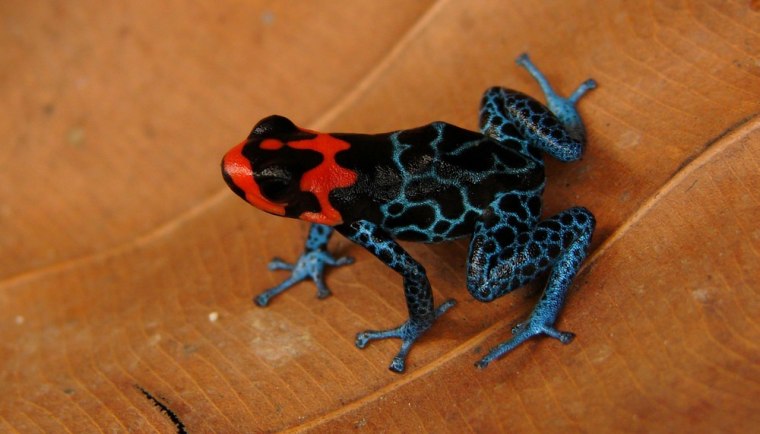
The World Wildlife Fund is highlighting the more than 1,200 species that have been discovered in the Amazon region over the past decade, in hopes of gaining support for protecting such species over the decades to come.
The WWF's 58-page report -- titled "Amazon Alive: A Decade of Discoveries 1999-2009" -- is being released to coincide with this month's conference on the Convention on Biological Diversity in Nagoya, Japan. Representatives from scores of nations around the world are meeting to consider strategies for preserving biodiversity, in the Amazon and elsewhere.
The Amazon rainforest, which takes in areas of nine countries (Brazil, Peru, Colombia, Bolivia, Ecuador, Venezuela, Guyana, Suriname and French Guiana), is one of the world's biggest hot spots for diversity. Those 1,200 species average out to one discovery every three days. But the Amazon is also under threat: Over the past 50 years, at least 17 percent of the rainforest has been destroyed, the WWF says. That translates into an area twice the size of Spain.
"What's scary to me is the fact that we're losing so much habitat every day in the Amazon," Meg Symington, the WWF's managing director for the Amazon, told me today. "If we keep destroying the habitat, we don't even know how many species we're losing."
Traditionally, one of every 10 known species in the world has been found in the Amazon. "Once everything is known, I expect it will be more like 30 percent of all species on Earth," she said.
Some of those species could be important for human welfare as well as the health of the Amazonian ecosystem. As an example, Symington pointed to poison-tree frogs such as Ranitomeya benedicta, discovered in 2008 in Peru. "They have chemicals in their skin that turn out to be very important for medical purposes," she said.
So what do all these species need to be protected from? The threats include deforestation for cattle ranching and agriculture, as well as mining and infrastructure projects that have been planned with too much emphasis on economic development and not enough emphasis on environmental protection. For example, a tree porcupine on the WWF's species list was discovered during wildlife rescue efforts at a hydropower dam site.
The boom in biofuels has led to an even more intense Amazonian land rush, Symington said. "What was once very inaccessible is now part of the global economy," she observed.
The "Amazon Alive" study was commissioned with the idea of releasing it during the biodiversity conference, Symington said. WWF is hoping this month's meeting will spark new efforts to protect the world's biological wellsprings. "Since the Amazon really is an ecosystem that transcends national boundaries, we think there are many opportunities for regional collaboration on protected areas," she said.
That's the approach that the WWF has been taking, illustrated by its collaboration with a Latin American regional network known as Redparques. Symington said she'd like to see the countries represented at the biodiversity meeting "recommit themselves to aggressive targets" for habitat protection -- targets that have been unmet so far.
To get a sense of what's at stake, check out this slideshow of exotic species from the WWF's list. And then feast your eyes on these other examples of biodiversity:
- New species from New Guinea
- Scientists finish first sea census
- Amphibians wanted ... alive
- Three 'lost' amphibians found
- Deep-sea creatures of the Coral Sea
- The top 10 new species from 2009
- Beautiful biodiversity in Brazil
- New Guinea's 'Lost World' revisited
- Indonesia's 'Garden of Eden'
- Marine marvels from Papua New Guinea
- Biological treasures from Borneo
- Celebrities of the Celebes Sea
- 12 froggy finds from India
- Fantastic frogs from Colombia
- Aliens lurk in Antarctic depths
- The strange species of Suriname
- Vulnerable new species in Brazil
- Discoveries from Vietnam's 'Green Corridor'
- Endangered species of the Mekong Delta
- New species from Australia's coral reefs
- Thousands of new species in ocean's depths
- Hundreds of new species amid the Himalayas
- New species found Down Under .. underground
- Eight 'extinct' species found alive and kicking
Visit the Cosmic Log page on Facebook and hit the "Like" button. You can also follow @boyle on Twitter. And if you really want to be friendly, ask me about "The Case for Pluto."